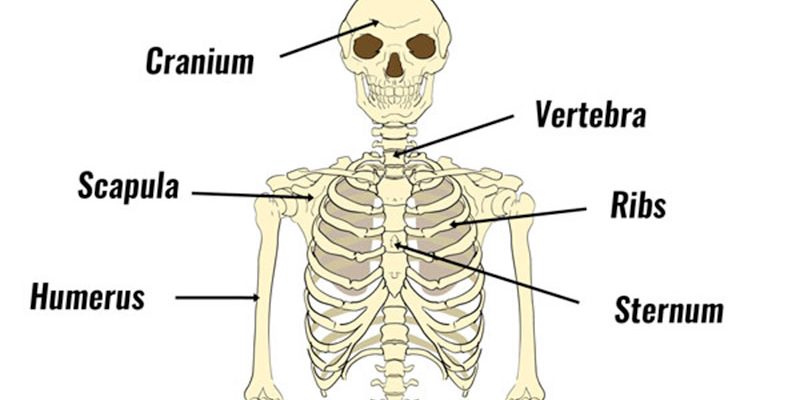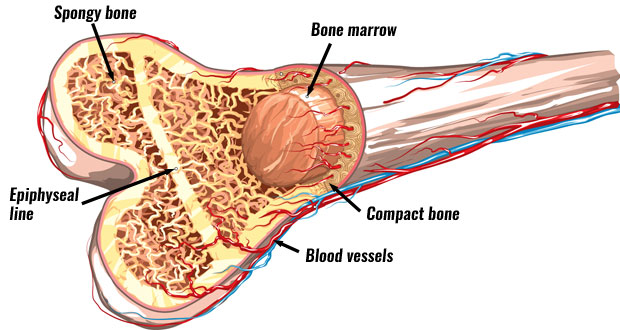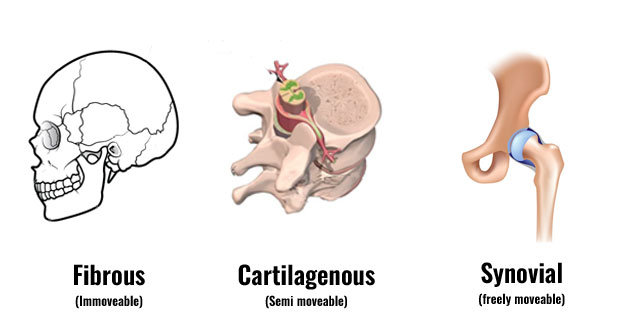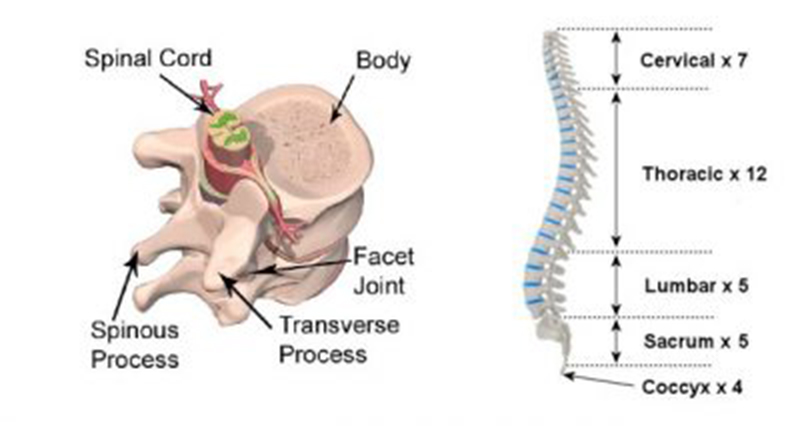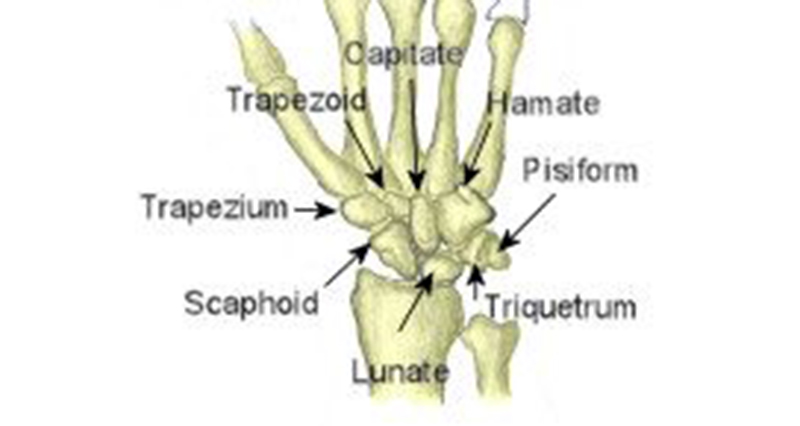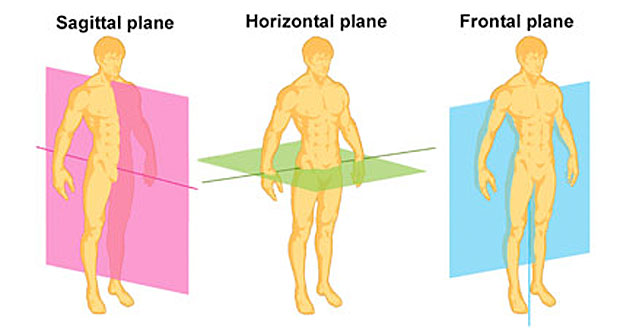The human skeleton comprises 206 bones. The functions of the skeleton are to provide support, give our bodies shape, provide protection, and movement, and produce red blood cells.
Bones of the human skeleton
The main bones of the human skeleton are:
The Skull
The skull is made up of the Cranium, Mandible, and Maxilla
Shoulder girdle
The shoulder girdle comprises the clavicle (collar bone) and scapula (shoulder blade).
The arms
The humerus is the upper arm bone whilst the radius, and ulna makes up the forearm. A good way to remember which way round the ulna and radius are is to relate the ‘l’ in ulna to your ‘little finger’. The radius radiates around it.
Hand
Bones of the hand are the Carpals, Metacarpals, and Phalanges.
Chest
The chest is made up of the Sternum in the middle and Ribs.
Spine
The spine has 5 regions; Cervical area (top 7 vertebrae), Thoracic (next 12), Lumbar (bottom 5 vertebrae), Sacrum (5 fused or stuck together bones), and Coccyx (the tiny bit at the bottom of the spine).
Pelvic girdle
The Ilium, Pubis, and Ischium together make up the pelvic girdle.
Leg
Femur, Tibia, and Fibula
Ankle
Talus and calcaneus
Foot
Tarsals, Metatarsals, and Phalanges.
Human skeleton diagram
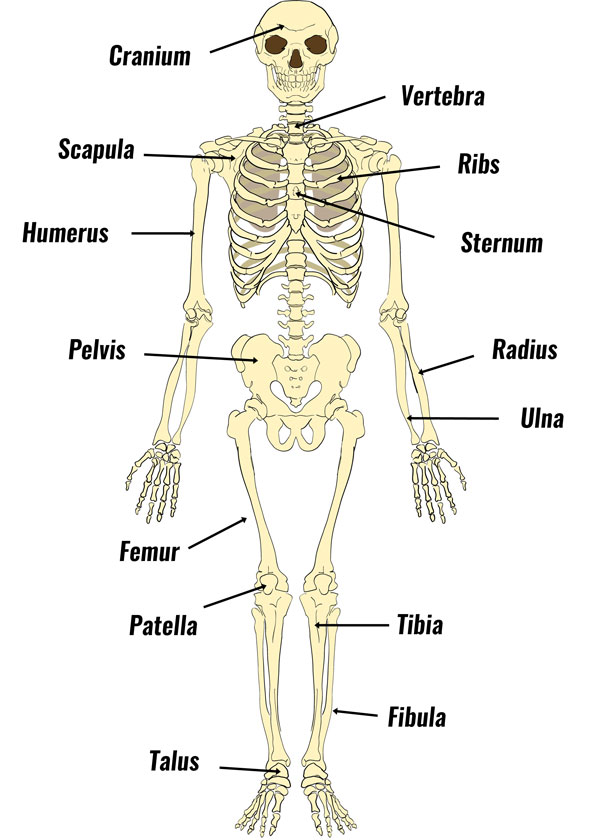
The skeleton divides into two parts known as the axial skeleton and the appendicular skeleton. The axial skeleton consists of the central core of the skull, spine, and ribs. The arms and legs make up the appendicular skeleton.
Bone formation in the human skeleton
Bones form by the ossification of cartilage. All bones start off as cartilage (normally in the womb). They gradually turn to hard bone over a period of years. This process is called ossification. This is why calcium is essential for growing strong bones.
The functions of the skeleton
The functions of the human skeleton are:
Shape and structure
The skeleton gives the body shape and structure. Without it, we would just be a blob!
Protection
The human skeleton provides protection for major organs. For example, the chest (rib cage) protects internal organs such as the heart and lungs. The skull protects the brain.
Movement
Muscles attach to bones via tendons to enable movement. When muscles contract, they exert force on bones, and as a result, you move!
Produce blood cells
The skeleton produces red and white blood cells within the bone marrow. Bone marrow is a spongy substance in the cavities of long bones. Red blood cells carry oxygen around the body which is important in the production of energy.
White blood cells are important for fighting disease and infection. Platelets aid blood clotting when the skin is damaged.
Storage
Storage of calcium and phosphorous. These minerals make bones and teeth strong.

